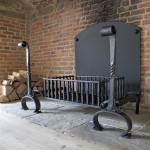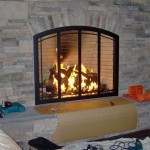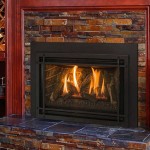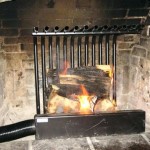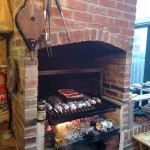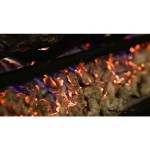Painting a Wood Fireplace Mantel White: A Comprehensive Guide
A wood fireplace mantel, often a focal point in a living space, can significantly impact the overall aesthetic of a room. While natural wood mantels offer a rustic charm, painting a wood fireplace mantel white can instantly brighten and modernize a space, creating a clean and more contemporary look. This process requires careful preparation, appropriate materials, and a methodical approach to ensure a durable and visually appealing finish. This article provides a detailed guide to successfully painting a wood fireplace mantel white.
Preparation is Paramount: Cleaning, Sanding, and Priming
The success of any paint project hinges on thorough preparation. Failing to properly prepare the wood surface will result in a less than desirable finish, characterized by uneven paint adhesion, visible imperfections, and potential premature peeling. Therefore, allocating sufficient time and effort to the initial stages is crucial.
The first step in preparing the mantel is cleaning. Over time, mantels accumulate dust, soot, grease, and other debris, especially if the fireplace is frequently used. A clean surface is essential for paint adhesion. Begin by wiping down the entire mantel with a damp cloth to remove loose dirt. For more stubborn grime, a mild detergent solution can be used. Mix a small amount of dish soap with warm water and gently scrub the mantel with a soft sponge or cloth. Be sure to rinse thoroughly with clean water to remove any soap residue. Allow the mantel to dry completely before proceeding to the next step.
Sanding is the next critical step. Sanding serves several purposes: it removes any existing finish (such as varnish or stain), smooths out imperfections, and creates a slightly roughened surface that provides better adhesion for the primer. The appropriate grit of sandpaper depends on the existing condition of the mantel. If the mantel has a glossy finish or is heavily stained, start with a coarser grit sandpaper, such as 80-grit or 120-grit, to remove the finish more effectively. For previously painted mantels or those with a less pronounced finish, a medium-grit sandpaper, such as 150-grit or 180-grit, may suffice. Use a sanding block or orbital sander to sand the entire mantel, paying particular attention to edges and corners. Ensure that the sanding is even and consistent across the entire surface. Once the existing finish is removed, switch to a finer-grit sandpaper, such as 220-grit, to smooth out any remaining imperfections and create a smooth base for the primer. Thoroughly remove all sanding dust with a tack cloth or vacuum cleaner. Dust particles can interfere with paint adhesion and result in a bumpy finish.
Priming is an essential step that should not be skipped, especially when painting wood. Primer serves as a foundational layer, providing several benefits. First, it seals the wood, preventing the paint from being absorbed into the grain. This ensures that the paint color is uniform and consistent. Second, primer provides a better surface for the paint to adhere to, resulting in a more durable and long-lasting finish. Third, primer can help to block stains and tannins from bleeding through the paint, which is particularly important when painting wood that has been stained in the past. Choose a high-quality primer specifically designed for wood. Oil-based primers are known for their excellent stain-blocking properties, while water-based primers are easier to clean up and typically have lower VOCs. Apply the primer in thin, even coats, using a brush, roller, or sprayer. Allow the primer to dry completely according to the manufacturer's instructions, typically at least 24 hours. Once the primer is dry, lightly sand it with a fine-grit sandpaper (220-grit or higher) to smooth out any imperfections and create an even surface for the paint. Remove all sanding dust before proceeding to the painting stage.
Selecting the Right Paint and Applying it Correctly
Choosing the right paint is crucial for achieving the desired aesthetic and ensuring the longevity of the finish. The type of paint, its sheen, and its suitability for use near a fireplace are all important considerations. Selecting the appropriate tools for application is equally essential for achieving a smooth and professional-looking result.
For painting a wood fireplace mantel white, an interior latex paint is generally recommended. Latex paints are durable, easy to clean, and available in a wide range of sheens. Consider using a paint specifically formulated for trim and woodwork, as these paints tend to be more durable and resistant to scratches and scuffs. The choice of sheen depends on the desired aesthetic and the level of durability required. Matte sheens offer a low-luster finish that can help to conceal imperfections, while gloss sheens are more durable and easier to clean. Semi-gloss or satin sheens are a good compromise, providing a balance of durability and aesthetic appeal. When selecting the paint color, consider the overall design of the room and the desired effect. A bright white can create a clean and modern look, while an off-white or cream color can add warmth and sophistication. Ensure the selected paint is suitable for use near a fireplace. Some paints may be more resistant to heat and discoloration than others.
The application method and tools used can significantly impact the final appearance of the painted mantel. Brushes, rollers, and sprayers are the common application methods, each offering unique advantages and disadvantages. Brushes are ideal for painting intricate details and tight corners, but can leave brushstrokes if not used correctly. Choose a high-quality brush with synthetic bristles for use with latex paints. Rollers are best for covering large, flat surfaces quickly and efficiently, but may not be suitable for detailed areas. Use a roller with a short nap for a smooth finish. Sprayers provide the most even and professional-looking finish, but require more preparation and cleanup. If using a sprayer, be sure to thin the paint according to the manufacturer's instructions and practice on a scrap piece of wood before painting the mantel. Apply the paint in thin, even coats, following the direction of the wood grain. Avoid applying too much paint at once, as this can lead to drips and runs. Allow each coat to dry completely before applying the next, according to the manufacturer's instructions. Lightly sand between coats with a fine-grit sandpaper (220-grit or higher) to remove any imperfections and create a smooth surface for the next coat. Typically, two to three coats of paint are required to achieve full coverage and a durable finish.
Addressing Potential Challenges and Ensuring a Lasting Finish
Painting a wood fireplace mantel white can present certain challenges, such as dealing with knots, preventing bleed-through, and ensuring the paint finish is durable enough to withstand the heat and wear associated with a fireplace. Addressing these potential issues proactively is essential for achieving a successful and long-lasting result. Furthermore, allowing sufficient curing time and providing ongoing maintenance will help to preserve the beauty and integrity of the painted mantel.
Knots in the wood can pose a challenge, as they tend to bleed through the paint over time, creating unsightly discoloration. To prevent this, treat the knots with a knot sealer before priming. Knot sealers are specially formulated to block the resin from escaping and discoloring the paint. Apply the knot sealer according to the manufacturer's instructions, allowing it to dry completely before applying the primer. If the mantel has been previously stained, there is a risk of the stain bleeding through the paint. Using an oil-based primer with stain-blocking properties is the most effective way to prevent this. Apply two coats of oil-based primer, allowing each coat to dry completely before proceeding to the painting stage. Alternatively, a specialized stain-blocking primer can be used.
The area around a fireplace can be subject to high temperatures, potentially causing the paint to crack, peel, or discolor. While the mantel is typically positioned far enough from the firebox to avoid direct exposure to extreme heat, it is important to select a paint that is heat-resistant to some degree. High-quality interior latex paints are generally suitable for this purpose, but it is advisable to check the manufacturer's specifications to ensure the paint is rated for use in areas with moderate heat. Consider using a paint with a higher sheen, such as semi-gloss or gloss, as these sheens tend to be more durable and resistant to heat damage. Avoid using paints with a matte finish, as these are generally more porous and susceptible to discoloration. After painting, allow the paint to cure completely before using the fireplace. Curing time can vary depending on the type of paint and the environmental conditions, but typically takes several days to a week. Consult the paint manufacturer's instructions for specific curing time recommendations. Regular cleaning will help to maintain the appearance of the painted mantel. Wipe down the mantel regularly with a damp cloth to remove dust and soot. Avoid using harsh cleaning chemicals or abrasive cleaners, as these can damage the paint finish.
By following these guidelines, painting a wood fireplace mantel white can transform the look of a room, adding brightness and a touch of contemporary elegance. Careful preparation, the selection of appropriate materials, and a methodical approach are key to achieving a durable and visually appealing finish that will enhance the beauty of the fireplace and the overall ambiance of the living space.

Painting Your Oak Mantel White Fireplace Wood Painted Mantels

How We Painted Our Oak Mantel Channel Updates

My Fireplace Mantel Reveal A Makeover With Paint Setting For Four Interiors

My Fireplace Mantel Reveal A Makeover With Paint Setting For Four Interiors

Painting Your Oak Mantel White Hometalk

Tips For Painting A Fireplace Mantel Or Surround Paint Painted Mantels Wooden

Fireplace Ideas Mantel Styles For Today S Homes Maison De Pax

How To Antique A Mantle For Diy Beginners Happily Ever Adventures

Pin On Home Decor Decorating Organizing

Painting Your Oak Mantel White Hometalk

